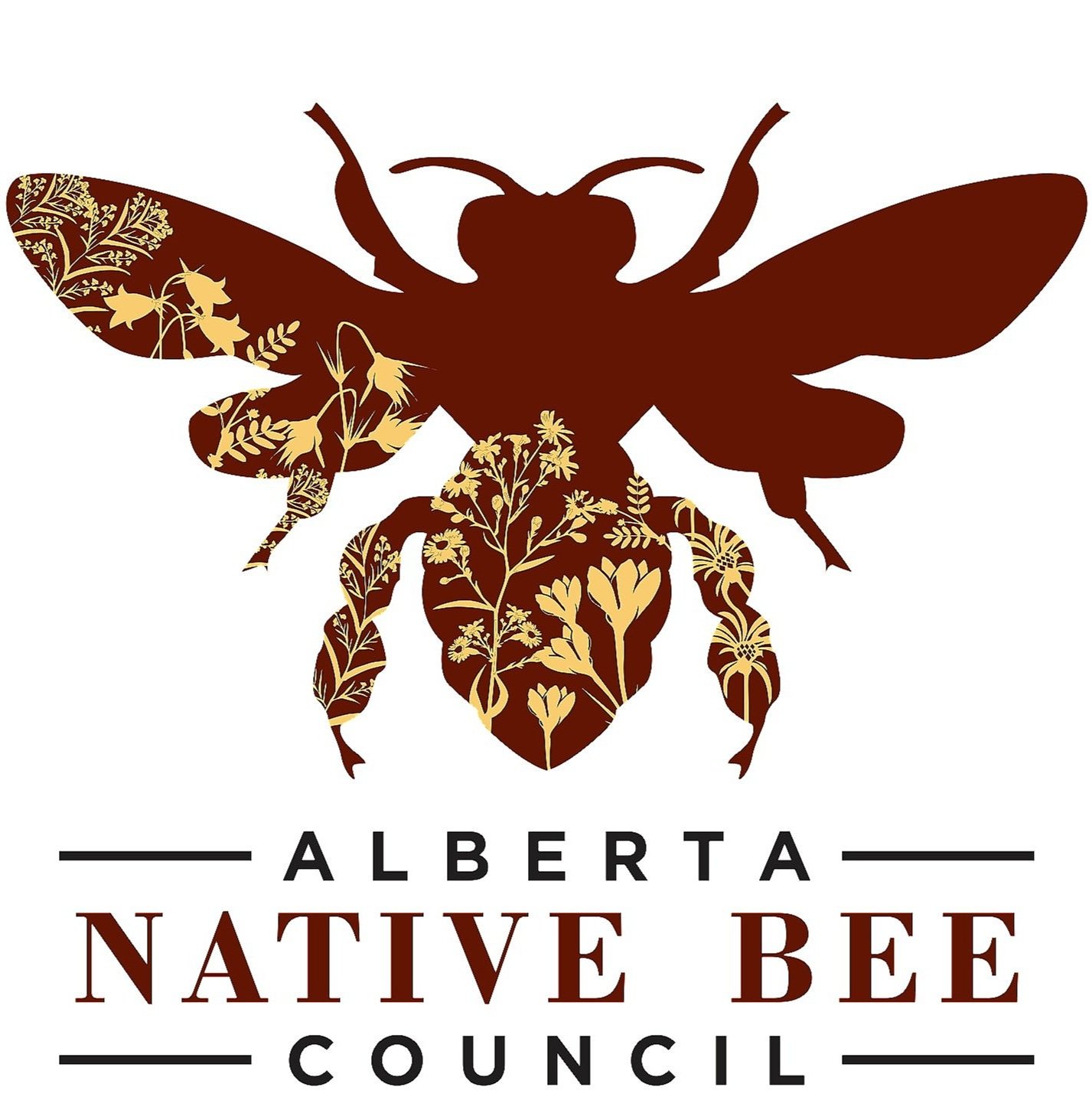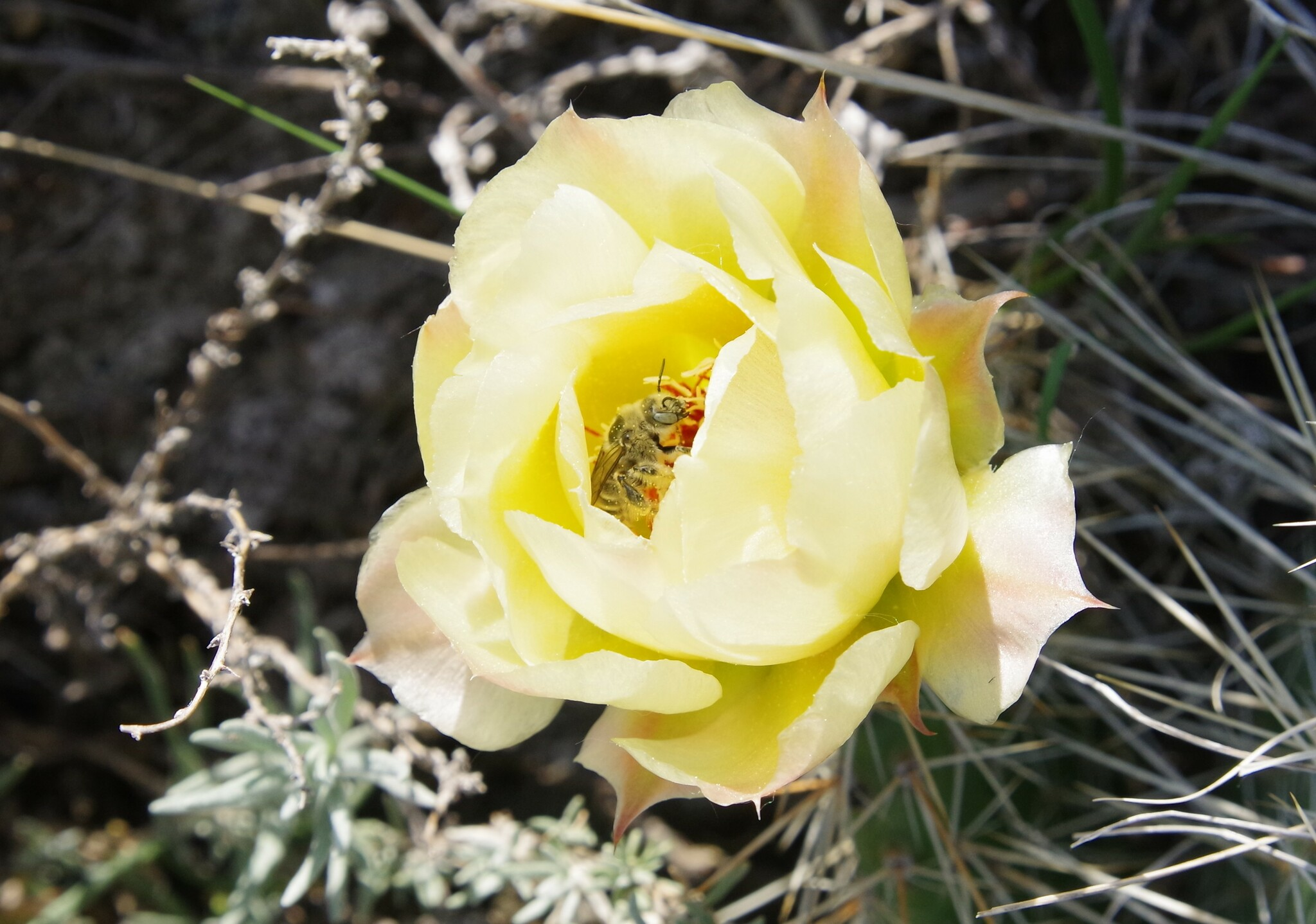Bee Taxonomy — More Exciting Than You Think!
by Natalia Ganson
Have you ever wondered who are those buzzing bees in your flower garden? Bumble bees are easy to spot, but who else comes to visit your flowers? How can you learn about who's who in the bee world? Thankfully, there is a group of people dedicated to giving names to each and every bee species and those people are taxonomists. Taxonomy is the science of naming and classifying organisms. Taxonomists discover new species, observe their differences, and give each different species a name.
Many people understand bees' vital importance, but don’t realize their immense diversity. In order to untangle that diversity, we need taxonomists to study different species to classify them properly. There are approximately 20,000 bee species worldwide, and about 375 species in Alberta. That’s a lot of different bees, so it’s critical to be able to identify each one. Not only to know who is visiting your garden, but to also study them, as each species is valuable in their own right.
A long-horned bee, either Melissodes sp. or Eucera sp., visiting a sunflower (Helianthus sp.). Photographed by Natalia Ganson.
Like all creatures, each species of bee has a name so scientists and enthusiasts alike can distinguish one from another. Most species have common names, but these can be problematic for identification, since many different groups of people and cultures have different names for the same species. For instance, “long-horned bees” can refer to a large group of species, so saying you saw a long-horned bee visiting a sunflower doesn’t narrow it down to a specific species. Because of the possible confusion, taxonomists assign scientific names to species so everybody knows they are talking about the same species. For example, the southern chimney bee, a cactus specialist, has the scientific name Diadasia australis. No other bee has that scientific name. Once a species has a name and its recognizable features have been determined, when we see or collect it again, we can be certain we have the same species as before. This is helpful, as species data collected over the long term can be used to monitor distributions and abundance.
A southern chimney bee (Diadasia australis) visiting a plains pricklypear cactus (Opuntia polycantha). Photographed by Natalia Ganson.
Not only does taxonomy help us to know the difference between species, but it is often the foundation of other biological studies. Bees are a highly diverse group, and each species plays a specific role in their environment. Once we know which species is which, we can conduct ecological studies and determine differences in behaviour and how they interact with their environment. Using taxonomy to make accurate species identifications, we can conduct population studies and determine which species are doing okay and which are in decline and need help. In this way, taxonomy can directly inform conservation strategies and effective management practices. If we didn’t have taxonomy, we may misidentify species and those in decline may go unnoticed, which would hinder conservation plans that help species in trouble. Through species identifications, we can better understand native bee population declines and create more effective conservation plans.
Science aside, I believe when you walk into your garden and you can name a bee visiting a flower, you can gain a deeper relationship with that bee and a stronger connection to nature. Learning species’ names allows you to notice and care more about the bees and other bugs around you. Through this, you will become more ecologically conscious. Knowing your peers' names is important and so are the names of your local bees. Gaining a better understanding of each creature with which we share this diverse world, and knowing their names, is a sign of respect and fosters compassion for the environment.
A half-black bumble bee (Bombus vagans) pollinating a clover (Trifolium sp.). Photographed by Natalia Ganson.
Not only does taxonomy and naming species allow ecologists and conservationists to pursue more in-depth and accurate studies to ensure different bee species remain healthy, it also allows us to become more ecologically conscious and gain a deeper knowledge of the natural world.
As Baba Dioum, a Senegalese forestry engineer, stated: “In the end, we will conserve only what we love; we will love only what we understand and we will understand only what we are taught.” And how can we do that without giving a name to each creature we share this earth with?
References
Gonzalez, V. H., Griswold, T., & Engel, M. S. (2013). Obtaining a better taxonomic understanding of native bees: Where do we start? Systematic Entomology, 38(4), 645-653. https://doi.org/10.1111/syen.12029



